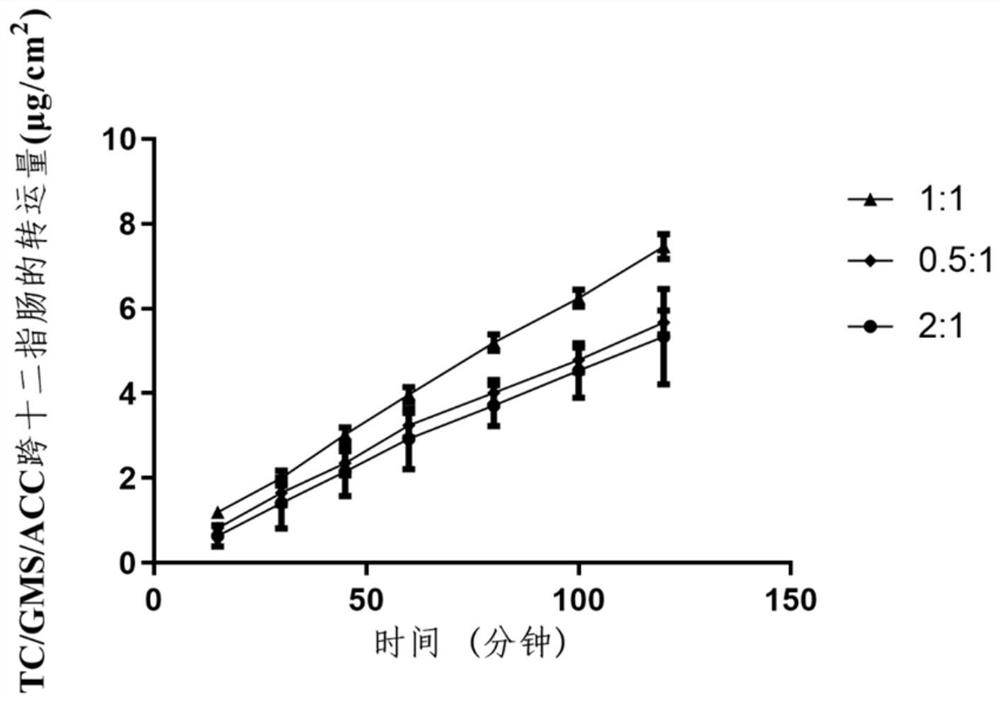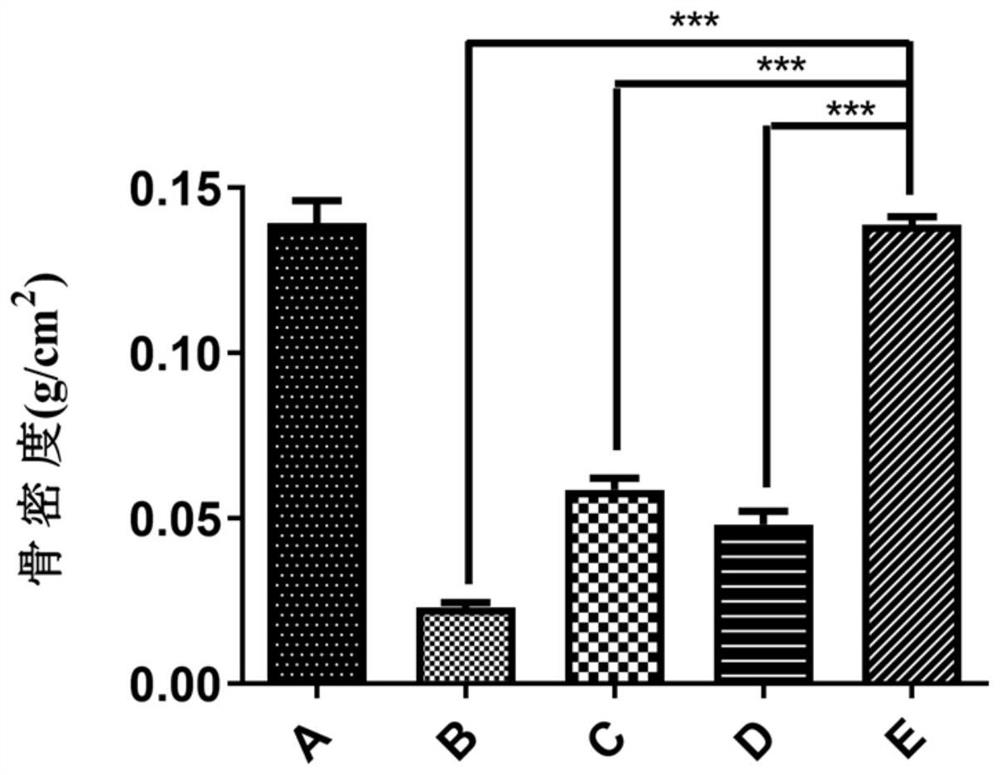A kind of simvastatin-loaded bone targeting composite lipid nanoparticle and its application
A technology of simvastatin and compound lipids, which is applied in drug combinations, bone diseases, medical preparations of non-active ingredients, etc., can solve the problems of low water stability and achieve the effect of improving compliance and strong transport capacity
- Summary
- Abstract
- Description
- Claims
- Application Information
AI Technical Summary
Problems solved by technology
Method used
Image
Examples
Embodiment 1
[0018] (1) Preparation of simvastatin-loaded bone-targeting composite lipid nanoparticles
[0019] Take 200mg CaCl 2 , accurately weighed, dissolved in 300 μL of ultrapure water, and the solution was added dropwise to 100 mL of absolute ethanol, placed in a round-bottomed flask, and sealed with a parafilm. After leaving a little air hole on the parafilm, put the round bottom flask and 3g of (NH 4 ) 2 CO 3 The glass bottles were placed together in a desiccator, and the gas diffusion reaction was carried out in a constant temperature and humidity chamber at 30°C. After reacting for 2-3 days, the absolute ethanol in the round bottom flask was centrifuged (15000 rpm for 10 min) to obtain white precipitated amorphous calcium carbonate nanoparticles. The resulting amorphous calcium carbonate nanoparticles were dispersed with an appropriate amount of absolute ethanol and then dispersed using a probe ultrasonic instrument (400W, working for 2s, stopping for 3s, ultrasonicating for...
Embodiment 2
[0036] Example 2 Bone Targeting Composite Lipid Nanoparticles (TC / GMS / ACC) Transport Amount Across MDCK Cell Monolayer Membrane
[0037] The ratio of simvastatin to soybean phospholipid 1:3, glyceryl monostearate to bone-targeting complex lipid nanoparticles 0.5:1-2:1 was used for monolayer membrane transport test. MDCK cells were seeded on Transwell polyester membrane and cultured for 7 days to form a cell monolayer. After washing the cell monolayer three times with HBSS, add 0.5mL 1mg / mL fluorescently-labeled oral composite lipid nanoparticles to the upper chamber of the Transwell for transmembrane transport for 4h, then remove all the liquid in the lower chamber, and measure the concentration of the lower chamber with a fluorescence spectrophotometer. Transport capacity of orally administered complex lipid nanoparticles. see results figure 1 , when the mass ratio of glyceryl monostearate (GMS) and composite lipid nanoparticles (PL / ACC) was 1:1, 138.68 μg of nanoparticles ...
Embodiment 3
[0038] Example 3 Transduodenal transport of bone-targeted complex lipid nanoparticles (TC / GMS / ACC) available for oral administration
[0039] The ratio of simvastatin to soybean phospholipid 1:3, and glycerol monostearate to bone-targeted complex lipid nanometer 0.5:1-2:1 was used to study the duodenal transport capacity. Female SD rats (180-200g) were randomly divided into 3 groups, with 3 rats in each group, fasting for 12h (without water) before the experiment. The rats were anesthetized with ether, killed by neck dislocation, the abdominal cavity was opened, and the duodenum about 10 cm long was quickly removed, immediately placed in Krebs-Ringer (K-R) intestinal nutrient solution at 4°C, and the small intestine was turned over after a brief flush. Use surgical thread to ligate each intestinal segment after valgus into a sac about 10 cm long (one end is tied tightly, and the other end is fixed on a thin plastic tube to facilitate sampling and fresh intestinal nutrient solu...
PUM
 Login to View More
Login to View More Abstract
Description
Claims
Application Information
 Login to View More
Login to View More - R&D
- Intellectual Property
- Life Sciences
- Materials
- Tech Scout
- Unparalleled Data Quality
- Higher Quality Content
- 60% Fewer Hallucinations
Browse by: Latest US Patents, China's latest patents, Technical Efficacy Thesaurus, Application Domain, Technology Topic, Popular Technical Reports.
© 2025 PatSnap. All rights reserved.Legal|Privacy policy|Modern Slavery Act Transparency Statement|Sitemap|About US| Contact US: help@patsnap.com



